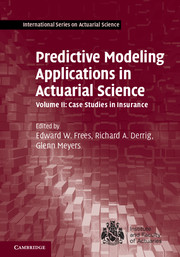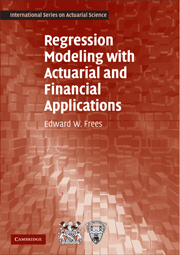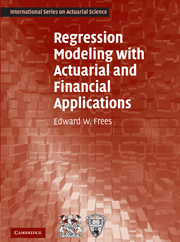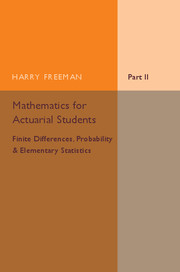Predictive Modeling Applications in Actuarial Science
Predictive modeling uses data to forecast future events. It exploits relationships between explanatory variables and the predicted variables from past occurrences to predict future outcomes. Forecasting financial events is a core skill that actuaries routinely apply in insurance and other risk-management applications. Predictive Modeling Applications in Actuarial Science emphasizes life-long learning by developing tools in an insurance context, providing the relevant actuarial applications, and introducing advanced statistical techniques that can be used to gain a competitive advantage in situations with complex data. Volume 2 examines applications of predictive modeling. Where Volume 1 developed the foundations of predictive modeling, Volume 2 explores practical uses for techniques, focusing on property and casualty insurance. Readers are exposed to a variety of techniques in concrete, real-life contexts that demonstrate their value and the overall value of predictive modeling, for seasoned practicing analysts as well as those just starting out.
- Supports active and life-long learning through the use of real world data sets
- Introduces advanced techniques that can be used to gain a competitive advantage in situations with complex data
- Provides a link between data analysis and data modeling, explaining the role of a model
Reviews & endorsements
Praise for Volume 1: 'With contributions coming from a wide variety of researchers, professors, and actuaries - including several CAS Fellows - it's clear that this book will be valuable for any actuary whose main concern is using predictive modeling in his or her own work.' David Zornek, Actuarial Review
Product details
July 2016Adobe eBook Reader
9781316722923
0 pages
0kg
This ISBN is for an eBook version which is distributed on our behalf by a third party.
Table of Contents
- 1. Pure premium modeling using generalized linear models Ernesto Schirmacher
- 2. Applying generalized linear models to insurance data - frequency-severity vs pure premium modeling Dan Tevet
- 3. GLMs as predictive claim models Greg Taylor and James Sullivan
- 4. Frameworks for general insurance ratemaking - beyond the generalized linear model Peng Shi and James Guszczaz
- 5. Using multilevel modeling for group health insurance ratemaking - a case study from the Egyptian market Mona S. A. Hammad and Galal A. H. Harby
- 6. Clustering in general insurance pricing Ji Yao
- 7. Advanced unsupervised learning methods applied to insurance claims data Louise A. Francis
- 8. The predictive distribution of loss reserve estimates over a finite time horizon Glenn Meyers
- 9. Finite mixture model and workers compensation large loss regression analysis Luyang Fu and Xianfang Liu
- 10. A framework for managing claim escalation using predictive modeling Mohamad A. Hindawi and Claudine H. Modlin
- 11. Predictive modeling for usage-based auto insurance Udi Makov and Jim Weiss.








